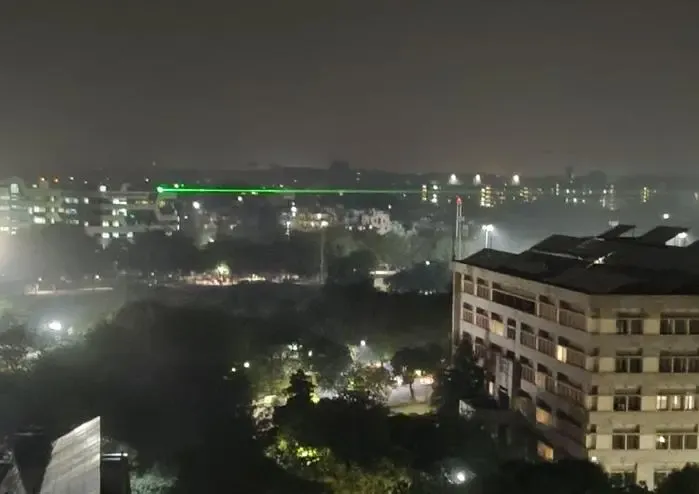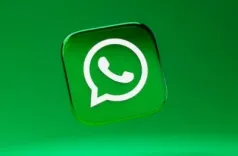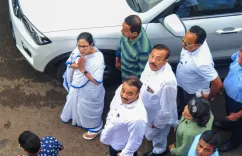Has India Stepped into a New Quantum Era of Secure Communication?

Synopsis
Key Takeaways
- India has successfully demonstrated free-space quantum secure communication.
- The technology utilizes quantum entanglement to enhance security.
- It achieved a secure key rate of 240 bits per second.
- The breakthrough was made possible by collaboration among DRDO, industry, and academia.
- This innovation has significant implications for defense and cybersecurity sectors.
New Delhi, June 16 (NationPress) India has achieved a remarkable milestone in defense and cybersecurity by successfully showcasing free-space quantum secure communication utilizing quantum entanglement, as stated by Defence Minister Rajnath Singh on Monday.
The Union Minister emphasized that the nation has embarked on a new quantum era of secure communication, which is anticipated to be transformative in future warfare.
This significant breakthrough was made possible by the DRDO-Industry-Academia Centre of Excellence (DIA-CoE) at IIT Delhi.
The demonstration involved the transmission of quantum entangled particles over a free-space optical link across a distance exceeding one kilometer within the IIT Delhi campus.
The experiment achieved a secure key rate of approximately 240 bits per second, with a quantum bit error rate of under 7 percent.
Experts indicate that this technology fosters real-time applications in quantum cybersecurity, including long-distance Quantum Key Distribution (QKD), future quantum networks, and the quantum internet.
Communication based on quantum entanglement offers enhanced security compared to conventional methods.
Even if the communication devices are compromised, entangled photons will expose any interception attempts by altering their quantum state.
This renders the encryption nearly unbreakable and extremely beneficial in sectors such as defense, finance, telecommunications, and other strategic areas.
A significant advantage of this novel method is its ability to eliminate the necessity of laying optical fibers, which can be expensive and challenging in remote or densely populated regions.
The project, entitled ‘Design and development of photonic technologies for free space QKD,” was approved by the Directorate of Futuristic Technology Management (DFTM), DRDO.
The demonstration was spearheaded by Professor Bhaskar Kanseri’s research group and attended by high-ranking officials, including DRDO DG (MED, COS & CS), Director SAG, Director DFTM, Dean (R&D) IIT Delhi, and other scientists.
In a congratulatory note, DRDO Chairman Dr Samir V Kamat and IIT Delhi Director Prof Rangan Banerjee hailed it as a pivotal milestone in India's technological progress.
This achievement is not the first for the team. In 2022, DRDO and IIT Delhi showcased India’s inaugural intercity quantum communication link between Vindhyachal and Prayagraj using underground optical fiber.
In 2024, they successfully distributed quantum keys over a 100 km length of telecom-grade optical fiber.
These milestones are part of DRDO’s DIA-CoEs initiative, which has established 15 Centres of Excellence at premier institutions like IITs and IISc to cultivate advanced defense technologies.









